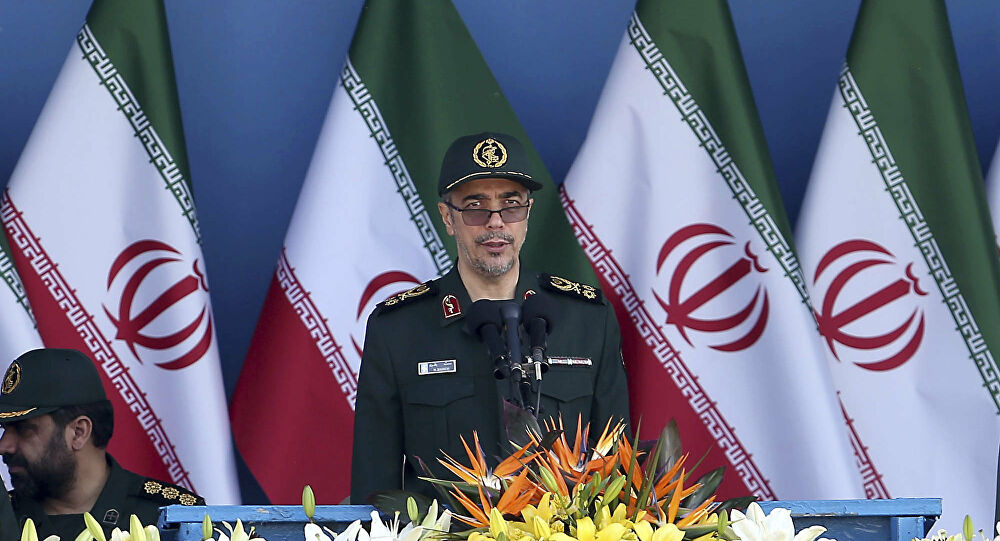As negotiations in Vienna stumble, due to differences between Iran and Western countries, as well as between Iran and the IAEA, Iran has begun to take steps that indicate it no longer rules out becoming engaged in a direct military confrontation in the region. This can be explained by Iranian concerns regarding new US military arrangements in the region, US targeting of Iran-affiliated militias in Syria, as well as ongoing Israeli operations to undermine Iran’s nuclear and conventional military capabilities.
Iran has lately begun to refocus its attention on US military presence in the Middle East, in tandem with bolstering its domestic preparations to withstand any potential external military attack. In this context, Iranian Chief of Staff Mohamed Bagheri on September 7th directed clear warnings towards both the US and Israel, as well as countries hosting US military bases in the region. He declared that Iran has sent written warnings, and messages via our its foreign ministry, to the countries hosting US bases, and has bolstered these warnings by increasing maritime and air patrols. Iran has also, according to Bagheri, intensified intelligence surveillance, and conducted drone and long-range missile exercises, and is now ready. Three days earlier, Iran’s Deputy Minister of Defense, Mahdi Farahi announced that Iran had prepared 51 of its cities and towns with civil defense systems and had heightened the alert level of its air defense forces to abort any potential foreign attack.
Iran’s stance can be explained by a number of developments, especially the widening scope of US-Israeli cooperation, which Iran is closely monitoring. Iran perceives itself to be the primary target of this coordination and believes it will continue whatever the outcome of the Vienna negotiations. If the negotiations fail, this coordination will be one of the mechanisms used to deal with the threat of Iranian nuclear capabilities. If on the other hand, the negotiations do succeed, this coordination will serve as a message of reassurance from Washington to Israel, that it will not curtail the latter’s options in dealing with what it perceives to be an imminent threat to its security and interests.
It is noteworthy that Iran’s Chief of Staff linked his warnings to the decision to include Israel in the theater covered by US Middle East Central Command. Iran considers this development as a means of enhancing Israel’s ability to conduct intelligence operations on Iranian soil, targeting its nuclear facilities, the leadership and staff of its ballistic missile program, the Revolutionary Guard, as well as Iran’s nuclear scientists. Iran’s Chief of Staff anticipated that inclusion in CENTCOM is likely to provide Israel with intelligence information that would facilitate these operations, meaning Tehran perceives the US has at the very least a logistical role in these breaches of Iranian security.
Iran’s threat perceptions have also been enhanced by the Biden Administration’s declared stance of willingness to consider alternative options, although it prefers a diplomatic resolution to the Iranian nuclear issue. While the US is hoping for a positive outcome in Vienna, it has pointed out it has several options in dealing with Iran’s policy of drawing out the negotiations to gain time, and these options may not be limited to sanctions. These options may include launching a regional system of maritime drones to counter threats to ships in the region’s waterways. These new drones were the
focus of heightened tensions in recent weeks, as Iran tried and failed to capture one in the Arabian Gulf, then succeeded in capturing two in the Red Sea and subsequently released them.
Moreover, the flyover on September 5th of two US nuclear-capable, long distance, B-52 bombers across the Middle East, in the context of rising tensions, was interpreted as a message of warning to Iran. Iran also perceived the US military strike targeting allied militias in the Syrian governorate of Deir El Zoor, especially the Fatemyeen Brigade, last August as a tipping point in regional escalation. The strike took place while US and Iranian responses to the draft nuclear agreement presented by EU Foreign Policy Representative, Josep Borrell, were being discussed.
The timing indicated Washington wished to illustrate that Iran’s refusal to address regional issues in the Vienna Negotiations would not hinder the US from acting to confront Iran and protect US interests. Although Tehran claimed that the stricken sites were not affiliated to Iran, it clearly understood the implications, and that Washington was sending a clear warning regarding its options, even as it continues to favor negotiations to reach a nuclear deal.
The coming months are therefore likely to witness further escalatory steps between the US and Iran, as the outcome of the negotiations in Vienna remain unclear. The ongoing differences between Iran and the IAEA regarding nuclear activities in some locations also suggest that all options remain open. Failure to reach a deal in Vienna will have a direct impact on relations between the US and Iran. The IAEA meeting, from September 12th – 16th, is likely to provide indications of the trajectory of the agency’s relations with Iran in the near future.


